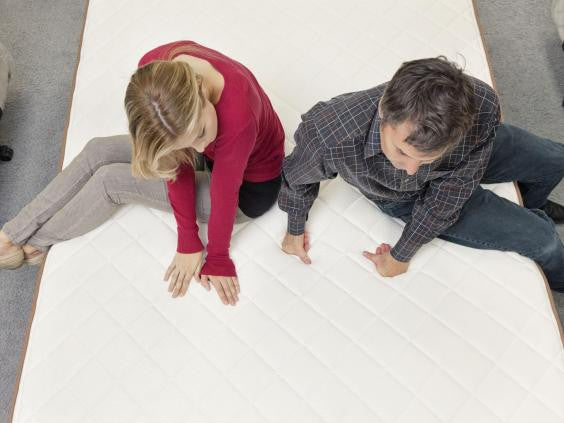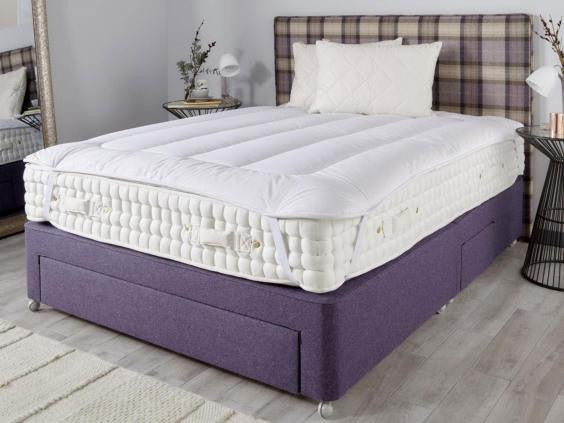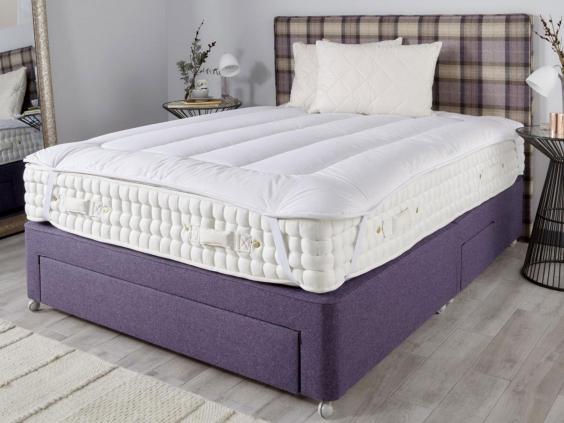Sleep Guide

Top 9 Tips for Buying a New Mattress 0
It seems you can't watch the evening news or pass by a strip mall without someone trying to sell you a mattress. The seemingly limitless options for choosing a mattress can be overwhelming.
This is even more true if you experience back or neck pain—choosing the right or wrong mattress can make the difference between spending the day feeling good or in pain.
These 9 tips can't guarantee you will end up with the perfect mattress (since everyone's mattress needs are different), but they can help you make an educated choice:
- Talk to your doctor. If you have a health condition, talk to your doctor or physical therapist about what he or she recommends. Keep in mind that doctors are not mattress experts, but they know your medical condition and symptoms and will probably have some good advice from that point of view.
- Take the mattress for a test drive. When shopping for a mattress, try to lie on the mattress in the store for at least 10 to 15 minutes. Don't feel self-conscious or let the salesperson hurry you along. It's a big purchase, and if you don't try it for at least 10 minutes you're not going to get a real feel for it. Couples should test out the mattress together.
- Be aware that firm mattresses aren't always better for your back. Think twice before buying a hard or firm mattress, as some research has shown that the best mattress for low back pain is a medium firm mattress rather than a firm mattress. There is a difference between firm support and firm feel. You want firm support with a comfortable feel. Comfort will be determined by your personal preference.
- Pillow tops aren't for everyone. Very light-weight people don't need big thick pillow top mattresses because they don't weigh enough to compress the foam to even touch the underlying coils/support system. On the flip side, larger/heavier people tend to feel more comfortable with a little extra cushion between them and the coils.
- Adjustable beds are a great option. If you find you are more comfortable sitting in a recliner than lying down, try an adjustable bed. They allow you to elevate your head and knees slightly to relieve pressure on the lower back. You can also create the same effect using pillows.
- Check the warranty. A good mattress will have a minimum of a 10 year full replacement or non-prorated warranty.
- Protect your investment. Don't forget some kind of waterproof mattress protector. Stains will void your warranty.
- Check out all the options and variations. Give yourself a comfort test if the salesperson doesn't offer you one. Ask to try a firm, a plush, and a pillow top in the same brand quality and price point. Lie on each one for 10 to 15 minutes. When you find the most comfortable type of mattress, ask to see more of that kind.
- Shop at a store that specializes in mattresses. The salespeople at a mattress specialty store usually have more training on the whole subject of sleep. Try to find a store that carries several major brands, such as Sealy, Serta, Simmons, and Tempurpedic.
Remember, it's your mattress, your back, and your money, so it's worth the time to research it and get the best mattress possible. Keep an eye out for specials and sales, and always try to negotiate delivery charges.
- Sleep House

Mattress Buying Tips 0
Getting a good night’s sleep is essential to staying happy and healthy. But buying a mattress without doing your research first can lead to sleepless nights and achy mornings, if you aren’t sleeping on a supportive base. And mattresses can cost anything from a few hundred pounds to thousands, so you’ll want to make sure your chosen mattress is worth the investment, before you buy.
Here, we’ve put together everything you need to know before you hit the high street (or browse the web – online only mattress companies are on the rise). So whether you’re a side sleeper or suffer from chronic back pain, read on to find out what option is best for you.
Types of mattress
Open spring mattress: also known as open coil or continuous coil mattresses. These contain one long piece of metal wire coiled into numerous springs. There’s also an additional border rod or wire to maintain shape and provide structure. It’s a great value for money option, although sides are machine-stitched rather than hand-stitched, but they are lighter than other models, making them easy to turn. They tend to be less supportive than other mattresses too, so are most suited to guest bedrooms or as children’s beds, where they are used occasionally or will need replacing regularly anyway.
Pocket spring mattress: this type of mattress is more luxurious, as it’s made from individual, small springs housed in their own pocket of fabric. This means each spring moves independently, providing more support than open spring mattresses. You can buy soft, medium or firm versions, depending on your preference, and they are more breathable than memory or latex mattresses (so ideal if you’re always getting too hot during the night). These are heavy to turn though and can be filled with natural materials such as lambswool which may agitate allergies. This is a good option if you’re looking for a bed for two people, as the separate springs will cater for your different needs and weights, while they will also minimise the risk of you rolling towards your partner in the middle of the night.
Memory foam mattress: these more modern mattresses are made from memory foam, which is a mouldable material that also responds to temperature and weight, and has hypo-allergenic properties. This means it will mould to the shape of your body, absorb your weight and relieve pressure on your joints. Not everyone likes the sinking motion of this type of mattress, and it can get rather warm, but it’s ideal for those who need support or suffer from a bad back, as it will maintain posture and align your spine horizontally when sleeping on your side.
Latex mattress: as the name suggests, these mattresses are filled with latex foam, which is an especially breathable material, so you won’t overheat in the middle of the night. It’s also extremely durable and should last for many years. And it’s a good option for those with allergies or asthma. They can feel rather solid at first though, so they’re better suited to those who prefer a firmer bed. Usually heavy, latex mattresses can be difficult to turn and cheaper versions can develop lumps and dents over time.
Mattress firmness
How firm your mattress is will affect how well you sleep. The type of firmness you need will depend on your sleeping position, height and weight. Here we explain what level of firmness is best for what type of sleeper.
Soft: side sleepers or those who change positions during the night are best suited to soft mattresses. This is because the way you sleep already relieves pressure from your spine so you want your mattress to mould to your body’s natural position.
Medium soft: this is ideal for those who change their sleeping position during the night, as it will still mould to your body position but provide a little more support.
Medium firm: this is best for people who sleep on their back, as you require extra lower back support which this type of firmness offers.
Firm: This type of mattress is ideal for those who sleep on their front, are over 15 stone or suffer from back pain. This is because it will keep your back in a relatively comfortable and stable position without allowing you to sink into it as you sleep, which can cause lower back pain.
- Sleep House

Mattress Care 0
Mattress care
Once your mattress is delivered, make sure you let it air for at least four hours. This will remove any storage smells of damp or cold. Ideally, the mattress should then be aired weekly by removing the bed linen. Remember to turn your mattress regularly too. This will stop dips forming and your weight altering part of the mattress, causing uneven sleeping.
Having a mattress protector will also help keep your mattress clean, prolonging its life. This is a sheet that goes on before your bed linen (and mattress topper) to protect your mattress from any stains or dirt.
You should aim to replace your mattresses every 8 to 10 years though. This is not only for hygiene reasons but because it will soften over time, reducing the support it gives you. If you feel sore when you wake up or you find you sleep better in other beds, it’s time for a change.
- Sleep House


